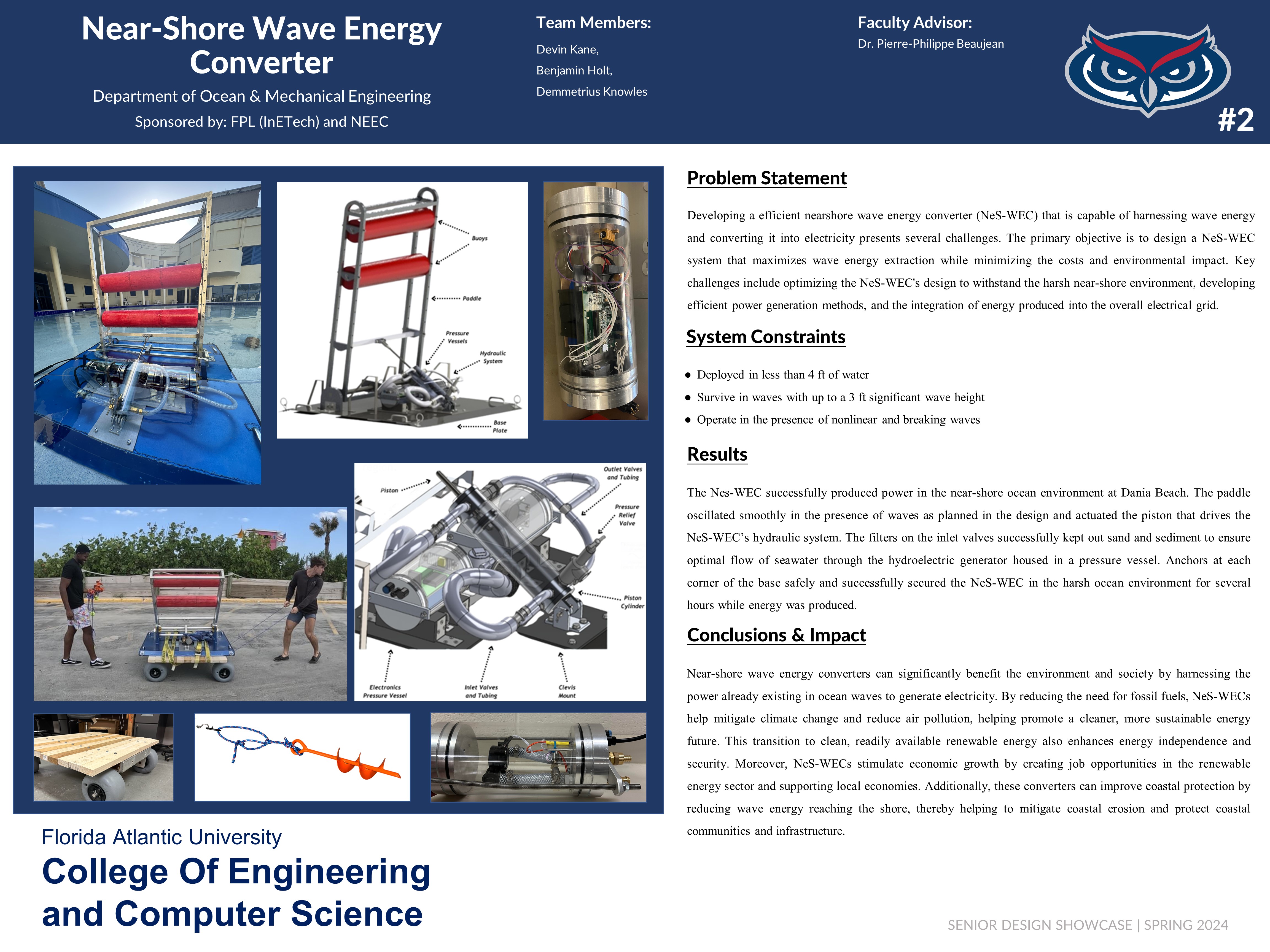Near-Shore Wave Energy Converter
Overview
Wave energy converters are becoming more prominent as a suitable source of energy. Thousands of designs have been patented and are being researched for an optimal design for mass production, as this form of clean and renewable energy could potentially power coastal cities and regions around the world. The Near-Shore Wave Energy Converter (NeS-WEC) is designed to contribute to coastal power and has the potential to store energy or to be connected to the power grid. The near-shore region has great potential for power generation from the high-amplitude breaking waves, but also faces additional challenges to WEC implementation, such as additional structural loads and stresses, sea debris and shoaling, splash zone corrosion, etc. The system is a paddle-driven piston that will capitalize on the surging motion of breaking waves in the near-shore region and buoyancy forces to oscillate and produce electrical energy. The NeS-WEC looks to mitigate the disadvantages of WEC deployment in the near-shore region through its structural design in the base plate and paddle. The NeS-WEC will collect data on power production through an array of sensors and a microcontroller.
Community Benefit
Clean energy production is a major benefit to the community and the environment as a whole. This project looks into providing a solution to converting wave energy in the near-shore environment, which is not researched as much as other types of wave energy converters. Wave energy will help move towards sustainability and a reduction of the carbon footprint on our earth.
Team Members
- Benjamin Holt - bholt2021@fau.edu
- Devin Kane
- Demmetrius Knowles
Sponsor
Naval Engineering Education Consortium (NEEC)
FPL Center for Intelligent Energy Technology (InETech)
